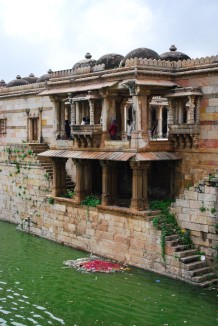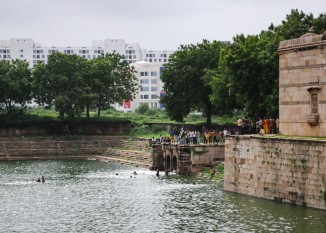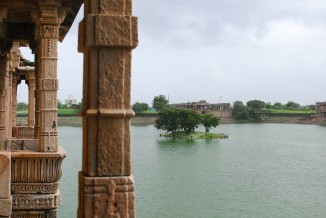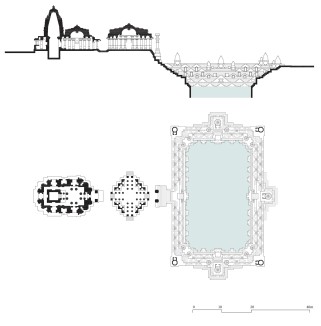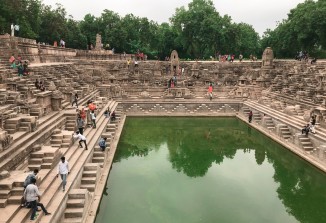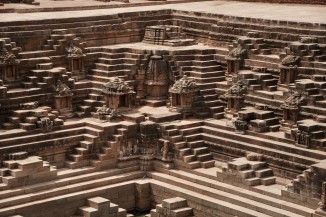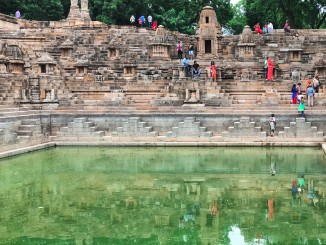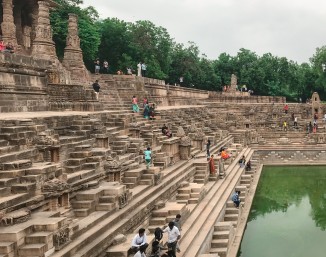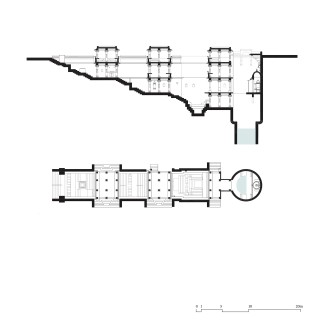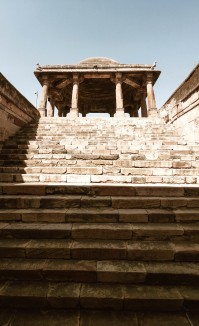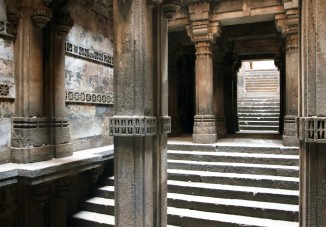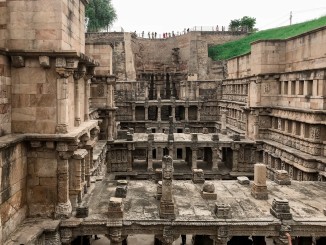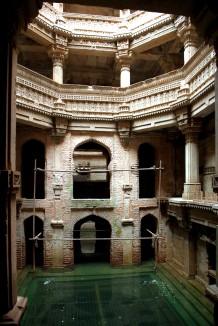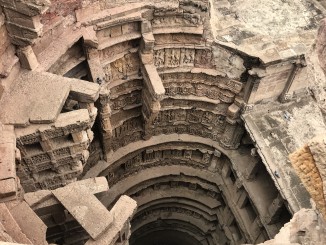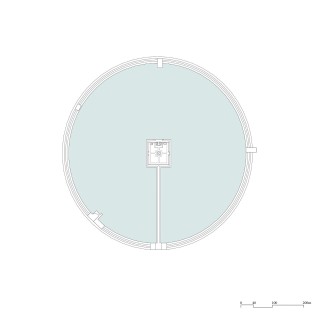Traditional Water Harvesting Structures of North Central Gujarat
A plan and section of the 15th century Sarkhej tank in Ahmedabad, surrounded by mosques, mausoleums, and pavilions. A tank is a large water reservoir that is manually excavated in specific geometric shapes. Its sides are embanked with retaining walls or parallel flights of steps.
A pavilion built over the stepped embankment of the Sarkhej tank, Ahmedabad.
A balcony projecting over the Sarkhej tank, Ahmedabad.
Ornamented sluice gates channeling water into the Sarkhej tank, Ahmedabad.
A mosque built over the long, stepped embankment of the Sarkhej tank, Ahmedabad.
The expanse of the Sarkhej tank and its central island as viewed from a balcony (jharoka), Ahmedabad.
A plan and section of the 11th century Suryakund at the Modhera Sun Temple complex in Mehsana. A kund is a square or rectangular funnel-shaped basin that stores rainwater and sometimes accesses groundwater. It is deeper than a tank, but has a smaller surface area.
The steep sides of the Suryakund are buttressed by a large mass of steps in repetitive triangular arrangements, Mehsana.
Detail of the triangular, stepped walls of the Suryakund, Mehsana.
Figures carved in niches along the steps and small shrines built on the landings of the Suryakund, Mehsana.
Flights of steps descend from the temple pavilion towards the water in the Suryakund, Mehsana.
A plan and section of the 11th century Mata Bhavani vaav in Ahmedabad. A stepwell is a subterranean building that consists of a large, open well shaft attached to a long, stepped corridor, sandwiched between retaining walls, that descends several stories from ground level.
A domed, ground-level entrance pavilion leading to a subterranean stepped corridor in Jethabhai vaav, Ahmedabad.
A long, stepped corridor sandwiched between strong retaining walls and interspersed with pillared galleries in Bai Harir vaav, Ahmedabad.
Pillared galleries bracing parallel retaining walls against the thrust of the earth in the Queen's Stepwell, Patan.
A small, shallow pool for collecting rainwater in Maata Bhavani vaav, Ahmedabad.
Multistoried pillared galleries overlooking a central water pool in Rudabai vaav, Ahmedabad.
Arched openings in its stepped corridor provide access to a large, open well shaft with groundwater in Jethabhai vaav, Ahmedabad.
Ornamented brackets for lifting water built along the rim of the well shaft in the Queen's Stepwell, Patan.
Plan of the 15th century Kankaria tank in Ahmedabad, with pavilions and a garden on its central island.



